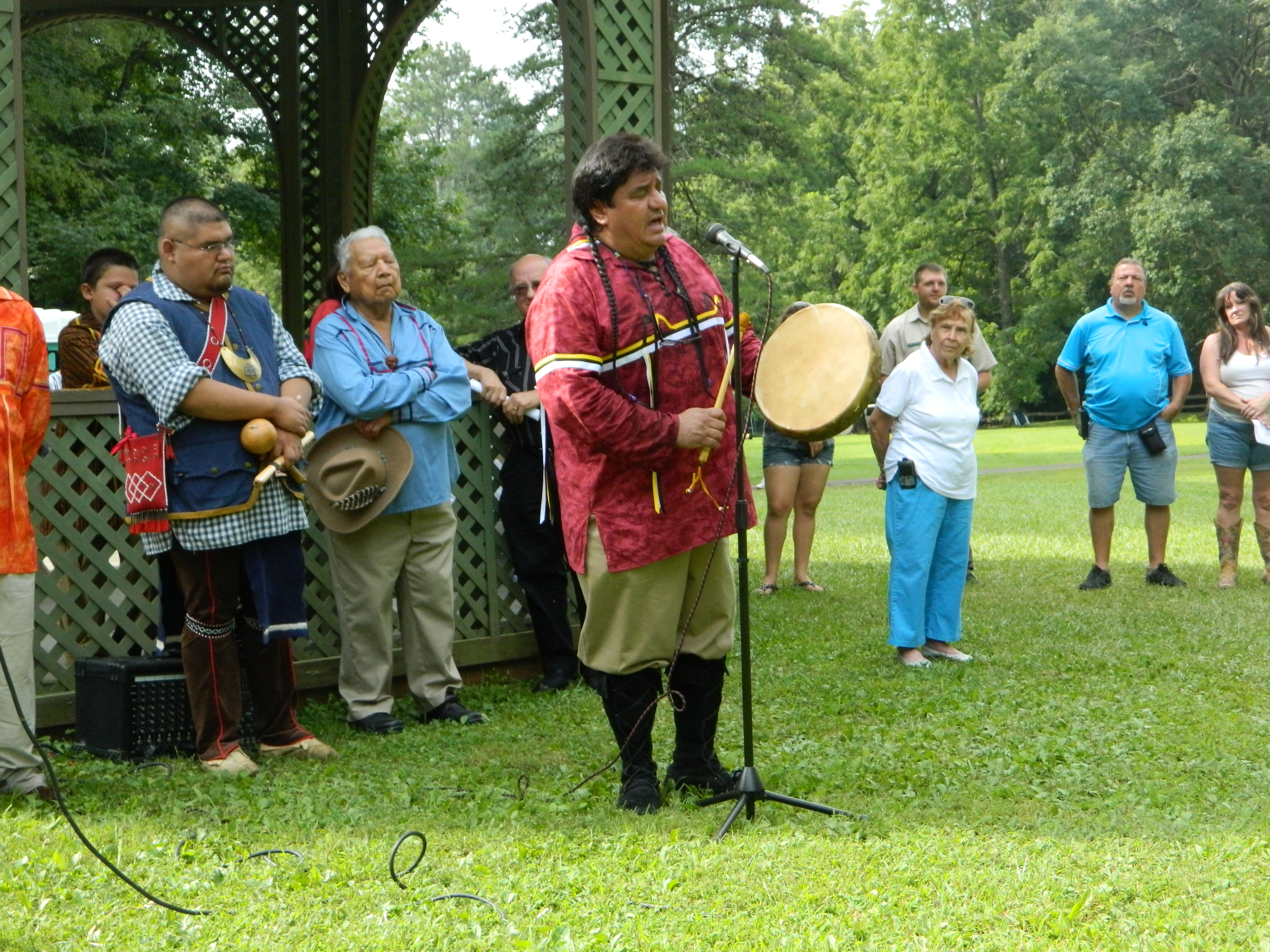Honoring Cherokees: Red Clay event marks 175th anniversary of Trail of Tears
Sunday, August 4, 2013
IF YOU GORed Clay State Historic Park will continue “Honor and Remember” events today. For more information, go to http://www.tn.gov/environment/parks/RedClay/ or call 423-478-0339.
RED CLAY, Tenn. — Cherokee culture and history came to life at Red Clay on Saturday as the state park commemorated the 175th anniversary of the Trail of Tears with an event titled “Honor and Remember.”
“We wanted to educate people and to let them touch and feel authentic Cherokee culture,” said event organizer Rick Bird of the Eastern Band of Cherokee. “It took a lot of people and work to make this happen.”
“We have no grudge with the past,” he said. “We don’t want people to come here and feel guilty. Instead we are righting wrongs in positive ways.”
Visitors experienced the crafts, arts and food of the Cherokee people on a day set aside to remember their forced removal to Oklahoma by the U.S. government in 1838. Storytellers immersed listeners in old Cherokee tales while other performers danced, sang or played stickball.
“We have some Native American blood in us, and we wanted to show our children a little bit of our heritage,” said Joseph Sells, who came to the event with his wife, Alesha, and their two children.
Red Clay — which served as the seat of Cherokee government from 1832 until the removal — is an ideal and symbolic place to host and interpret the life and culture of the Cherokees of the period, said organizers.
Those people had embraced many aspects of the culture and the agricultural economy of the post-colonial American nation that bordered their lands, said Jane Switzer, a park ranger.
The weekend event opened with a solemn ceremony honoring the estimated 8,000 Cherokee people who died of hunger and sickness over the long course of their internment and after their terrible trek westward. That number is double the 4,000 Trail of Tears deaths cited in most history books, said Dr. Robert Michael Abram, stating that the higher figure is based upon a re-examination of source evidence. The Cherokee Nation numbered 16,000 before the removal.
In conjunction with the commemoration, the park’s visitor center is displaying “Fewer Footprints and More Tears,” a temporary exhibit created by Abram. The exhibit’s name was inspired by the ever-decreasing number of Cherokee people who survived the desperate westward journey, he said.
The exhibit showcases the government documents that set the groundwork for the Cherokee removal, going as far back as 1802, during the presidency of Thomas Jefferson.
Works of art give expression to the loss of knowledge and promise caused by the numbers of elders and children who perished on the Trail of Tears, said Abram.
Paul Leach is based in Cleveland. Email him at paul.leach.press@gmail.com.
